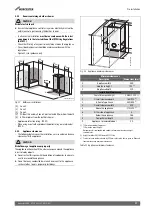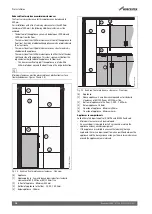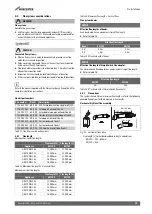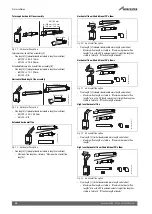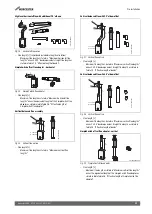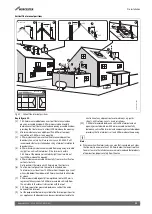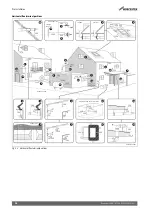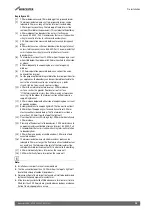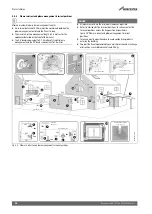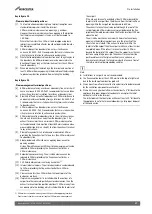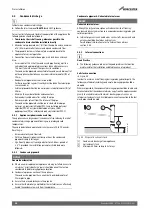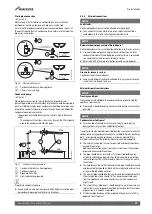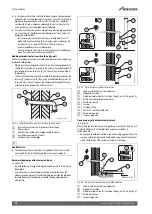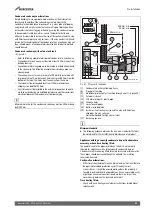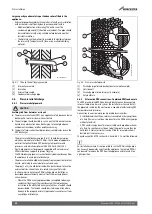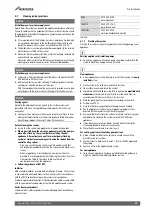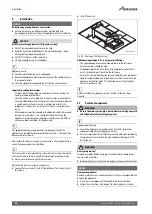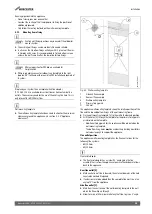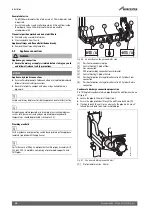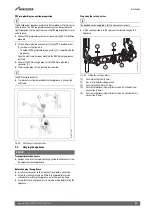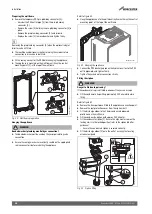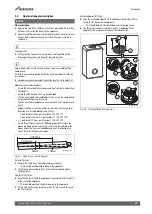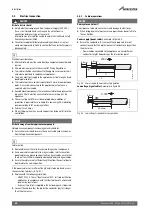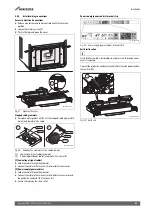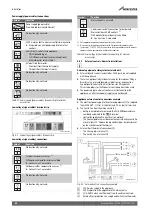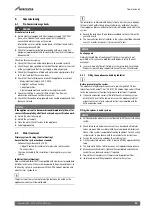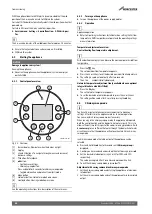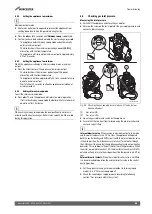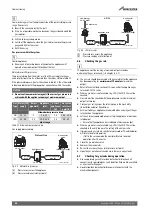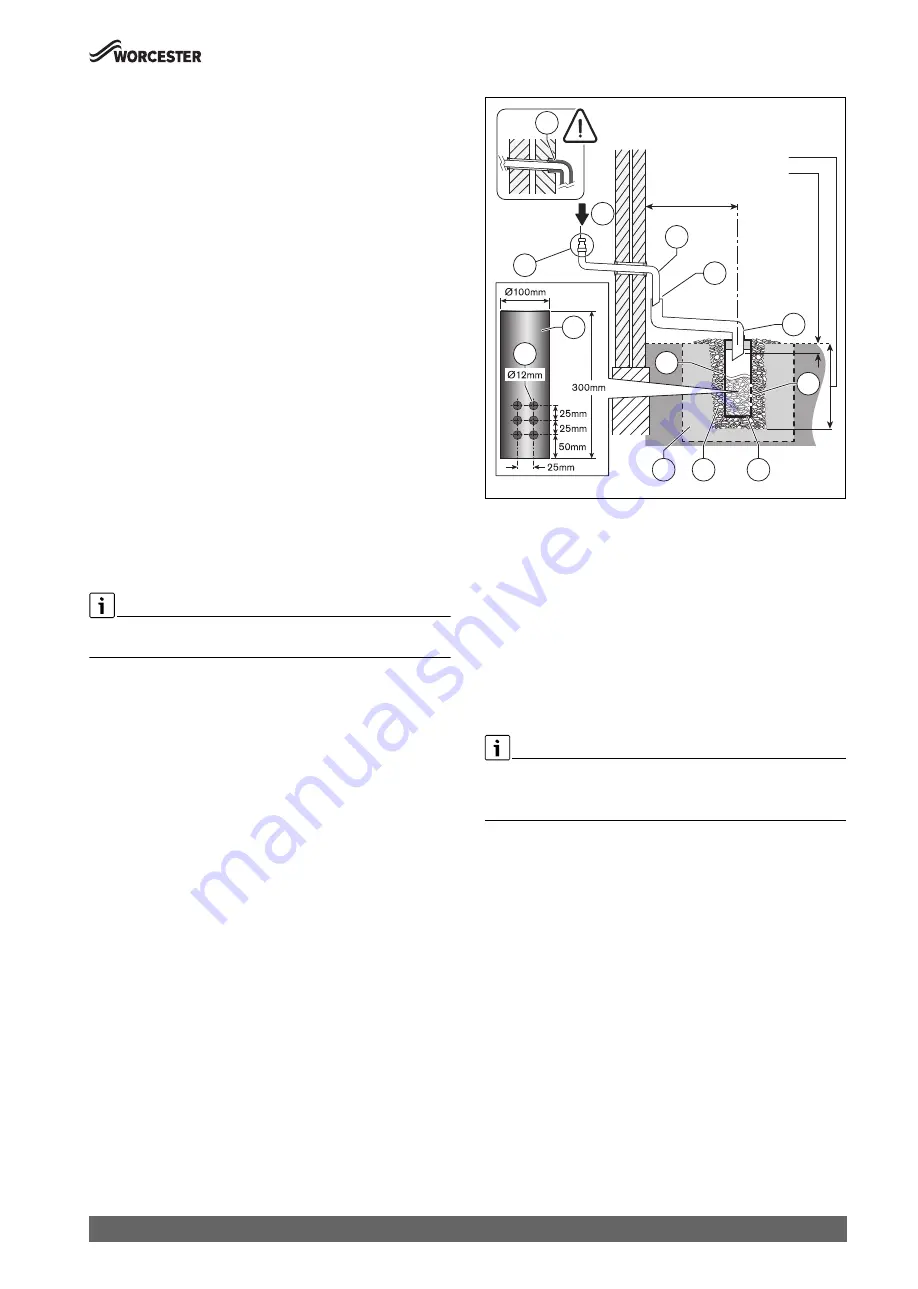
Pre-Installation
31
Greenstar 4000 – 6 720 891 162 (2020/09)
Condensate soak away considerations
Before deciding to use a purpose-made soak away the history of the
locality and the ability of the surrounding area to disperse the
condensate should be taken into account, e.g. areas prone to flooding
and ground with a high clay content can result in poor drainage with an
increased risk of water logging or freezing causing the condensate pipe
to become obstructed by water or ice and the boiler to shut down,
Although it is possible to increase the size of the soak away and the area
with limestone chippings in clay soil areas, if the clay content is high and
prevents effective dispersal of the condensate then a soak away may not
be a suitable means of condensate disposal and an alternative method
should be used.
Condensate soak away with external air break
Figure 41
• Refer to following example to dispose of condensate to a soak away.
• The condensate soak away must be sited at least 500mm away from
building footings.
• The condensate drainage pipe may be run above or below the ground
to the soak away. The following example shows drainage pipe run
above ground.
• The soak away must use a minimum of a 100mm Ø plastic tube with
two rows of three 12mm holes on 25mm centres and 50mm from the
bottom of the tube. The holes must face away from the house.
• The tube must be surrounded by at least 100mm of limestone
chippings to a depth of 400mm.
• An air break must be installed in the external pipework as shown to
avoid an airlock during ground flooding/adverse weather conditions
which could prevent the condensate from discharging.
Minimum hole size for the condensate soak away must be 400mm deep
by Ø 300mm.
Fig. 41 Disposal to soak-away
[1]
Condensate discharge from appliance
[8]
Pipework transition
[9]
Additional protection for transition through a wall. (
[11] External air break
[15] 100mm minimum Ø plastic pipe
[16] Drainage holes
[17] Limestone chippings
[18] Bottom of sealed tube
[19] Increase size of soak away size and the area with limestone
chippings if in clay soil area.
Not recommended for high clay soil areas.
[21] Increase pipe size
Minimum Standard
▶ The following guidance indicates the minimum standards that must
be maintained for the Installation and Maintenance of a product.
Appliances with large capacity condensate trap or CondenseSure
accessory or have trace heating fitted.
The need to insulate the pipework through the wall is not normally
required for appliances with a large capacity condensate trap or
CondenseSure/trace heating fitted for external runs under three metres.
These pipes should be sleeved though the wall and the insulation
recessed when used.
Cavity wall considerations:
• Whilst insulating the pipe through a typical external wall is unlikely to
be required for added protection against freezing in most
circumstances, it might be a consideration where the property is
located in particularly cold, exposed areas, has an uninsulated cavity
or perhaps an unusual construction where there is a larger than
normal cavity between the inner and outer wall.
Trace heating fitted:
• Check with trace heating manufactures instructions for additional
requirements.
500mm min.
25mm min.
400mm min.
15
16
0010012788-002
1
15
11
21
16
21
18
17
19
9
8

